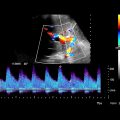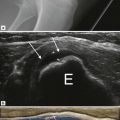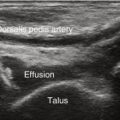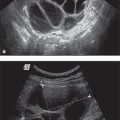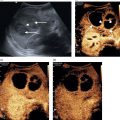KEY FACTS
Terminology
- •
Benign malformations of biliary tract
- •
Synonyms: von Meyenburg complex, bile duct hamartoma
Imaging
- •
Grayscale ultrasound
- ○
Numerous small, hypoechoic or hyperechoic foci uniformly distributed throughout liver
- –
Leads to inhomogeneous and coarse appearance of liver echotexture
- –
- ○
Multiple echogenic foci, often with associated comet-tail artifacts
- ○
Typically smaller lesions appear as echogenic foci whereas larger lesions appear cystic
- –
Often extent of echogenic foci on ultrasound is greater than anticipated compared to correlative CT or MR
- –
- ○
- •
Color Doppler ultrasound
- ○
Twinkling artifact may be seen
- ○
- •
MRCP
- ○
Numerous scattered, tiny cysts without communication between lesions and biliary tree
- ○
Top Differential Diagnoses
- •
Multiple simple hepatic cysts
- •
Multiple small hepatic metastasis
- •
Hepatic microabscesses
- •
Autosomal dominant polycystic liver disease
- •
Caroli disease
Clinical Issues
- •
May be misdiagnosed as multiple hepatic metastasis, microabscesses, cirrhosis, lymphoma, leukemia, etc. at initial imaging
- •
No further evaluation necessary when seen as isolated finding in healthy, nononcologic patient
Scanning Tips
- •
Linear transducers may better demonstrate biliary hamartomas than curved or vector transducers due to higher frequency and greater resolution

